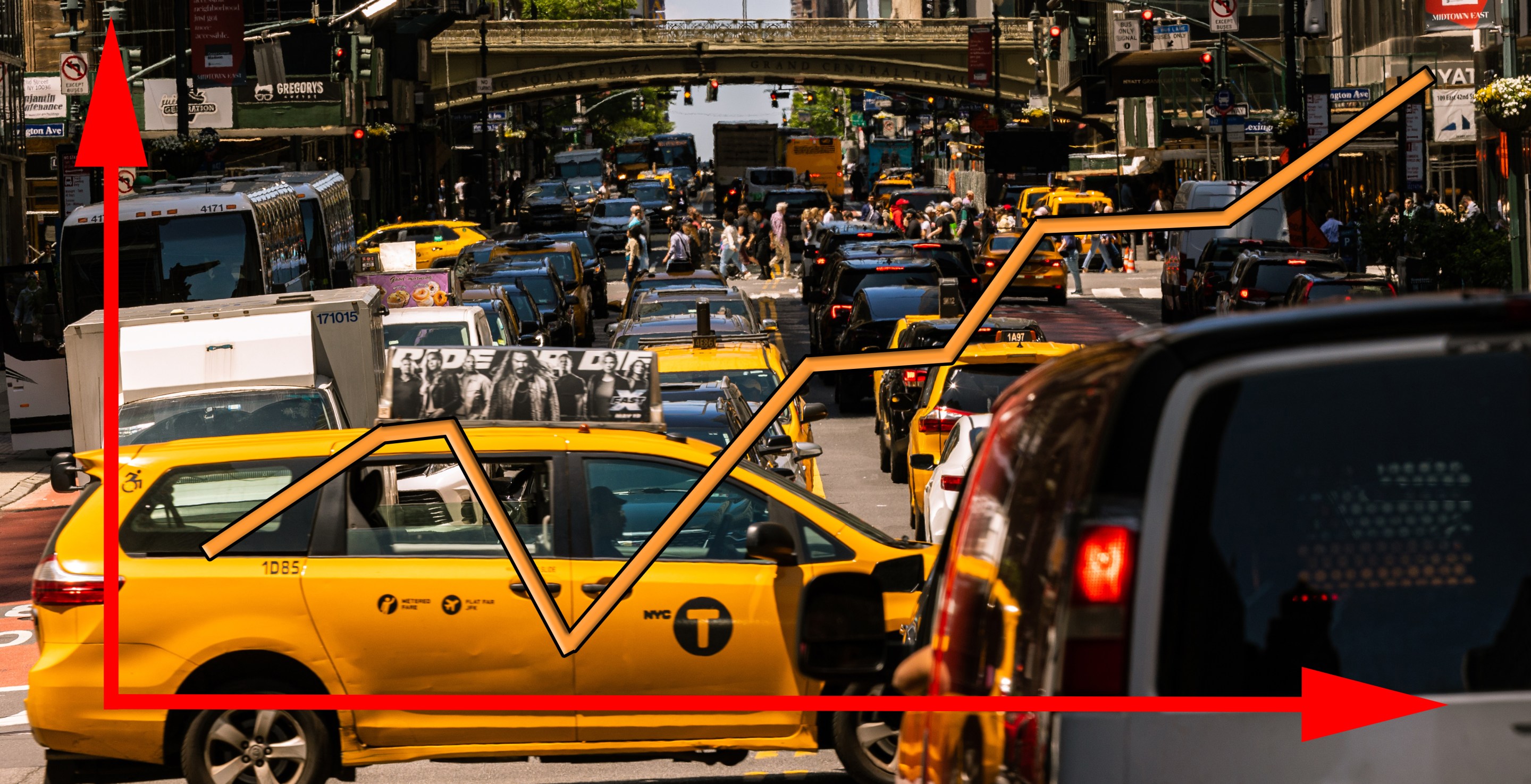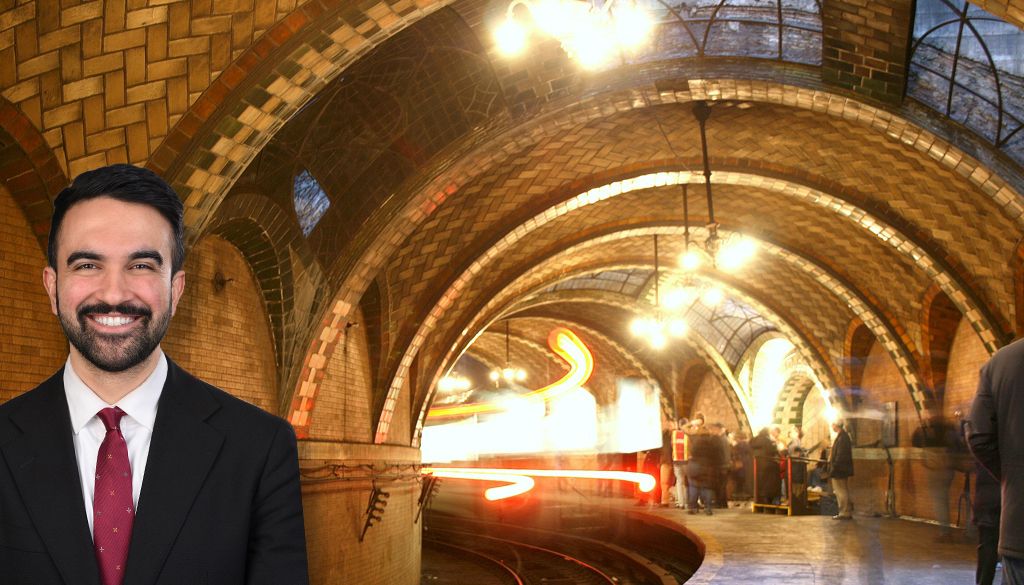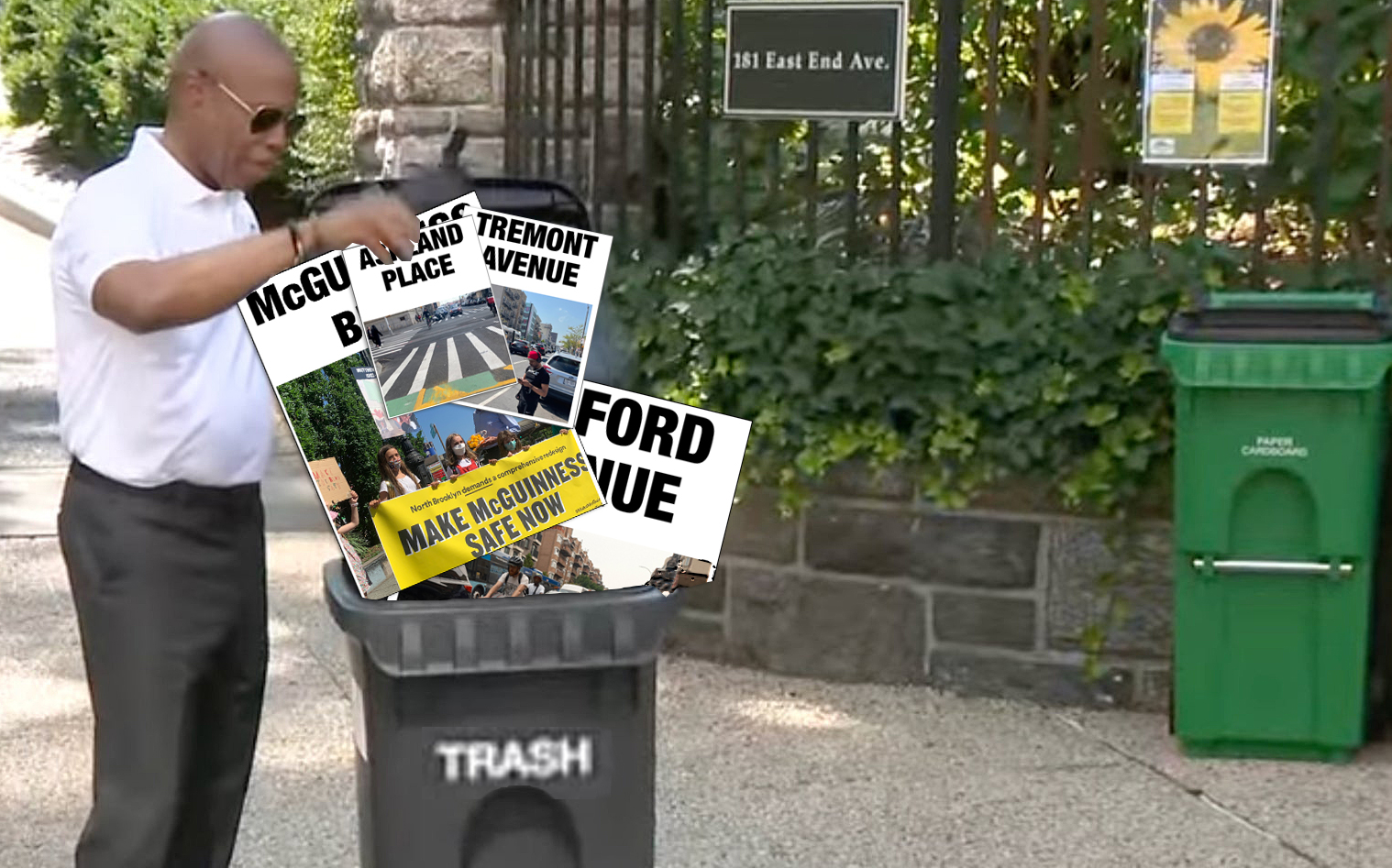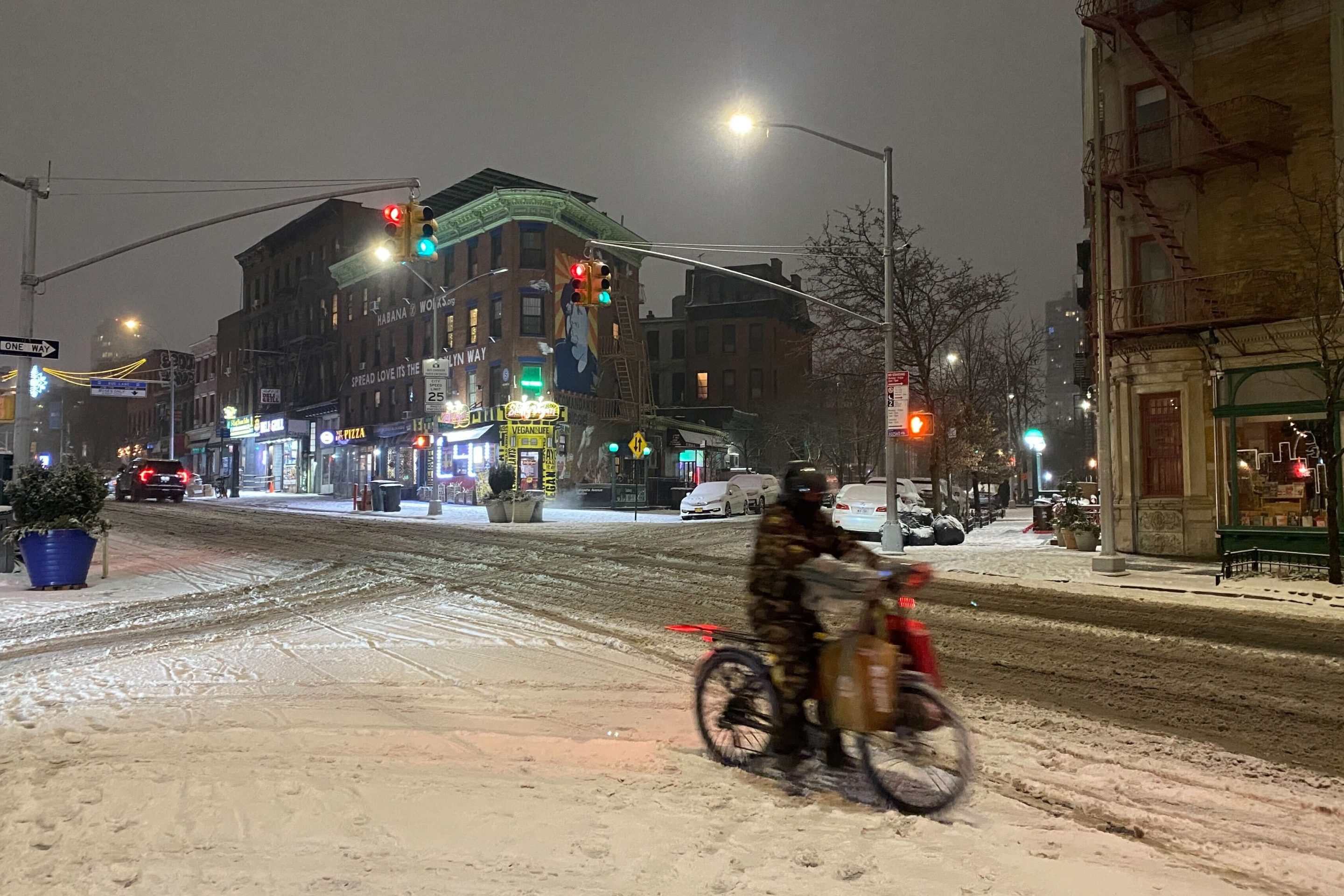We're driving ourselves mad.
Total car miles traveled by residents of the New York City metro area are up 14 percent over the past five years — and are way above pre-pandemic numbers — giving our area the third worst traffic in the country behind the sclerotic burgs of Miami and L.A., a new report shows.
Congestion in the New York metro area also went up 2.2 percent during the five-year period of the new Streetlight Data report. That's one of the nation's biggest increases in traffic (which is measured by assessing declining vehicle speeds).
Of course, New York's VMTs per capita remain the lowest in the country, thanks to our best-in-the-nation transit system, but the region's 14-percent increase in miles was roughly the same as car-dependent metros such as Cincinnati and Phoenix.
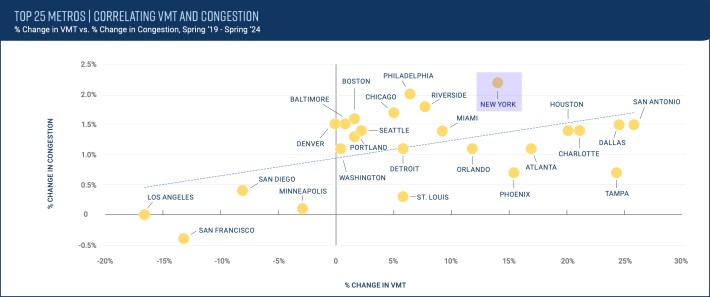
And when New York City's downtown core is isolated in the data, the city is even more of an outlier ... and not in a good way:
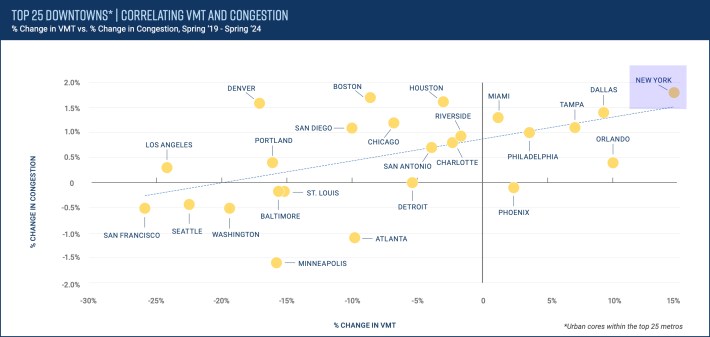
Streetlight's report singled out The Big Apple — not only because of the traffic, but because there won't be much in the way of change due to Gov. Hochul's termination of congestion pricing.
"New York City, where congestion pricing was paused, stands out as the urban core with the biggest increase in both congestion and VMT among the top 25," the report said. "New York City’s urban core, in particular, has seen both the biggest increase in VMT over the past 5 years and the biggest increase in congestion."
And it's clear from Streetlight's analysis why congestion pricing is so crucial: "Limiting VMT will be critical to reigning in traffic," the report said.
The city is going in the wrong direction on VMTs, partly due to the Adams administration's failure to meet legally mandated requirements to build bus and bike lanes.
Advocates jumped all over the new data.
“Our elected officials have a lot of work to do," said Sara Lind, Co-Executive Director of Open Plans. "It’s obvious that the increase in gridlock that we all bemoan is a direct result of this dramatic rise in driving — not bike lanes or outdoor dining or other street improvements."
The overall VMT increase mirrors data analyzed by the transportation statistical research firm Replica, whose data goes a bit further because the company compares anomyzed travel data with census figures.
Between fall 2019 and fall 2023, Replica says 80 percent of VMTs are driving by private car owners. But that figure is more or less flat; a key part of the rise in VMTs over the period came from taxi and Uber and Lyft rides, which rose from 10 percent of VMTs to 13.8 percent, a rise of nearly 40 percent. That came as transit use dropped during the pandemic and has not yet reached pre-pandemic numbers.
Who is driving ... all this driving? The wealthy.
According to Replica, in 2019, 31.6 percent of drivers made more than $150,000. But by fall 2023, nearly 40 percent of drivers were in that income stratosphere.
The Streetlight report also looked at the larger trends for our nation beyond the New York metro region. Overall, VMTs per capita went up 12 percent between May 2019 and May 2024. That's a lot of individuals doing a lot more individual driving.
"There was some hope [after the pandemic] that a new remote work culture might keep miles driven down and congestion at bay, [but] StreetLight’s results indicate that the status quo isn’t working," the report said. "A reliance on remote work is not a panacea to the rise in VMT and the default solution for traffic — adding roadway capacity — isn’t solving congestion."
Of course, advocates have a laundry list at the ready for reducing at least VMTs in New York City, first among them, a simple toll to reduce the number of drivers entering the Manhattan central business district.
"The report demonstrates just how disastrous Gov. Hochul’s decision to clumsily pause on congestion pricing— the region’s only legitimate measure that would make real progress in decreasing use of cars—was," Lind said. "New York City’s politicians and policymakers must follow the lead of other cities ... by prioritizing housing near transit, adding Bus Rapid Transit service, adding more bike lanes, and eliminating parking mandates.
"And to even entertain the possibility of watering down— or worse, abandoning— congestion pricing in the face of a significant increase in driving in recent years is a dereliction of duty when it comes to getting where we need to go on climate goals, street safety, and air quality," Lind added.
